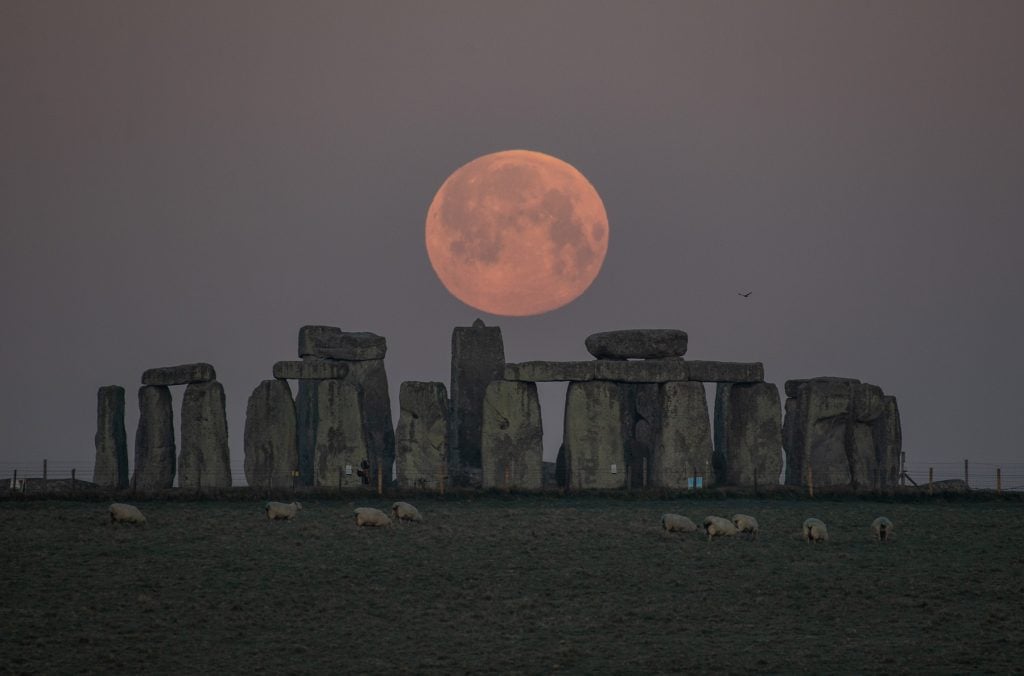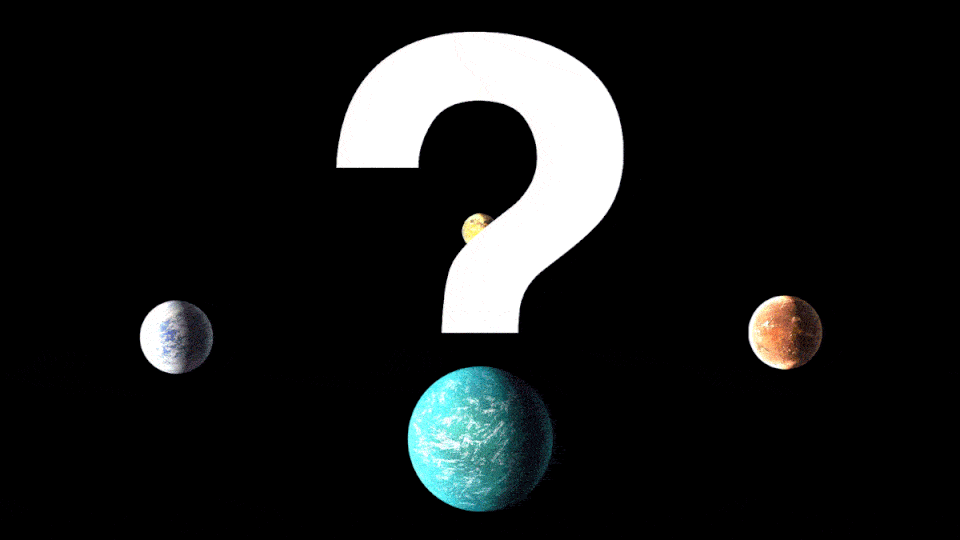Lavaland
Iceland’s volcanic eruption the longest in half a century

Fagradalsfjall (Islande) (AFP)
It will be six months on Sunday that the volcanic eruption currently mesmerising spectators near Reykjavik first began, making it the longest Iceland has witnessed in more than 50 years.
The first lava began spewing out of a fissure close to Mount Fagradalsfjall on the evening of March 19 on the Reykjanes peninsula to the southwest of Reykjavik.
And the ensuing spectacle — ranging from just a slow trickle of lava at times to more dramatic geyser-like spurts of rocks and stones at others — has become a major tourist attraction, drawing 300,000 visitors so far, according to the Iceland Tourist Board.
Death Eating
Evidence of Fur and Leather Clothing, Among World’s Oldest, Found in Moroccan Cave
Humans likely sported clothes made of jackal, fox and wildcat skins some 120,000 years ago

It’s not just animals that are at risk of dying out, the world’s crops are in rapid decline. Here’s why it matters what is on your plate.
In eastern Turkey, in a golden field overshadowed by grey mountains, I reached out and touched an endangered species. Its ancestors had evolved over millions of years and migrated here long ago. It had been indispensable to life in the villages across this plateau, but its time was running out. “Just a few fields left,” the farmer said. “Extinction will come easily.” This endangered species wasn’t a rare bird or an elusive wild animal, it was food, a type of wheat: a less familiar character in the extinction story now playing out around the world, but one we all need to know.
To most of us, one field of wheat might look much like any other, but this crop was extraordinary. Kavilca (pronounced Kav-all-jah) had turned eastern Anatolian landscapes the colour of honey for 400 generations (about 10,000 years). It was one of the world’s earliest cultivated foods, and is now one of the rarest.
How can a food be close to extinction and yet at the same time appear to be everywhere? The answer is that one type of wheat is different from another, and many varieties are at risk, including ones with important characteristics we need to combat crop diseases or climate change. Kavilca’s rarity is emblematic of the mass extinction taking place in our food.
Deep Porn
Deepfakes have disturbing implications for porn
A new app digitally superimposes women into videos — this is only the start

Artifical Intelligence has been heralded as ‘the future’ for as long as I can remember. The excitement is understandable: scientists may one-day be able to create an AI that is so efficient it can substitute the manual work of humans, replacing doctors, engineers and even journalists. But professional occupations are not the only area AI can be a powerful force.
Just a few weeks ago I speculated that if apps like Replika, which is supposed to simulate both friendships and romantic relationships, became too effective in their job they may replace certain aspects of human interpersonal relationships. AI could provide the same sort of parasocial digital relationship that one may gain through purchasing an OnlyFans membership, while cutting out the human on the other side of the screen altogether.
The Lobster Lady
At 101, she’s still hauling lobsters with no plans to stop
By PATRICK WHITTLE and ROBERT F. BUKATY

ROCKLAND, Maine (AP) — When Virginia Oliver started trapping lobster off Maine’s rocky coast, World War II was more than a decade in the future, the electronic traffic signal was a recent invention and few women were harvesting lobsters.
Nearly a century later, at age 101, she’s still doing it. The oldest lobster fisher in the state and possibly the oldest one in the world, Oliver still faithfully tends to her traps off Rockland, Maine, with her 78-year-old son Max.
Oliver started trapping lobsters at age 8, and these days she catches them using a boat that once belonged to her late husband and bears her own name, the “Virginia.” She said she has no intention to stop, but she is concerned about the health of Maine’s lobster population, which she said is subject to heavy fishing pressure these days.
“I’ve done it all my life, so I might as well keep doing it,” Oliver said.
Alex Pettyfer on “I Am Number Four” Sequel
Alex Pettyfer Gives Honest Answer About Why I Am Number Four 2 Didn’t Happen
Exclusive: Actor Alex Pettyfer honestly answers why he thinks a sequel to 2011’s I Am Number Four directed by DJ Caruso has never happened.

Actor Alex Pettyfer gave an honest answer to why he thinks a sequel to 2011’s I Am Number Four has never happened. Pettyfer first made a name for himself by starring in an adaptation of the Alex Rider young adult spy series, Stormbreaker. A few years later, he starred in I Am Number Four before moving on to Magic Mike, which served as a launching pad kind of role for the actor. Pettyfer played John Smith in I Am Number Four, which was directed by DJ Caruso and co-starring Dianna Agron, Teresa Palmer, and Timothy Olyphant.
While speaking to Screen Rant, Pettyfer said he enjoyed making the movie and was hopeful for a sequel. Still, during the time of release, the slate of Dreamworks films at the box office failed to perform, which essentially wiped the slate clean moving forward with new properties. Here’s what Pettyfer had to say about why no sequel was made and likely won’t be:
“I know. I wish we could have made a sequel to I Am Number Four. I really loved making that movie. You had Steven Spielberg as the producer, you had Michael Bay as a producer, DJ Caruso, but I think they tried something on that movie, and I’m being very honest, where the book, which was written by Pittacus Lore, which was James Frey basically, they tried some really interesting, creative publicity where the film and the book are released at the same time. I think that at the time, Dreamworks had War Horse, they had Hugh Jackman did that robot movie, and there was one other film. And I think just as a collective slate, maybe the movies didn’t perform as well as they should have. And so the slate was kind of wiped clean for Dreamworks to start again with a new slate relationship with funding. I really loved I Am Number Four, and I loved working with DJ, and I loved that concept and that kind of alienation of an outsider, people not accepting you for who you are. I know that movie or that franchise would have gone into a much mature … and the evolution of that would, I definitely know that because DJ was showing me, but we can dream, should we say.”
Bowie The Pioneer
The Forgettable David Bowie Song That Changed the Music Industry Forever
25 years ago, Bowie debuted “Telling Lies,” the first major downloadable single on the web
BY KIRK MILLER

David Bowie in 1996, the year he released a downloadable single online / Mick Hutson, SEAN GLADWELL
“I am the future / I’m tomorrow / I am the end.” — David Bowie, “Telling Lies”
If the music industry was going to undergo a tumultuous shift, it might as well have had David Bowie providing the soundtrack. On September 11th, 1996, Bowie’s “Telling Lies” became the first ever downloadable single by a major artist, arriving on Bowie’s website in three different formats, released over three weeks (a traditional single was later released in November).
As a song, “Telling Lies” is … well, it’s pretty generic drum ‘n’ bass with some brooding Bowie lyrics (“swear to me in times of war and stress”) and no real hook. It’s dark and maybe reflects the singer’s time spent touring as a co-headliner with Nine Inch Nails earlier that year. As AllMusic noted at the time about Earthling, the album from which “Lies” served as the first single, “The record frequently sounds as if the beats were simply grafted on top of pre-existing songs. Never are the songs broken open by a new form; they are fairly conventional Bowie songs with fancy production.”
The Evil Sun
Growing risk of once-in-a-century solar superstorm that could knock out internet, study says
By Alexandra Mae Jones

TORONTO (CTV Network) — Imagine if one day the internet was down not just in your neighbourhood, but across the globe, knocked out by a threat from space: an enormous solar superstorm.
It sounds like science fiction, but a new study says it could become our reality earlier than we think if we don’t prepare properly for the next time the sun spits a wave of magnetized plasma at us.
“Astrophysicists estimate the likelihood of a solar storm of sufficient strength to cause catastrophic disruption occurring within the next decade to be 1.6 — 12 per cent,” the study states.
“Paying attention to this threat and planning defenses against it, […] is critical for the long-term resilience of the internet.”
20-years Later
Watch Your Head
Scorned wife raids ex-husband’s cryogenics lab stealing frozen brains of people who hoped to be brought back to life
by Will Stewart

Valeria Udalova, 59, and staff from her company grabbed the remains of people who paid thousands of pounds hoping they could be resurrected.
Some of the corpses were from Britain and the US and were stored in Valeria’s ex-husband Danila Medvedev, 41, lab in the Moscow region of Russia.
The lab is Russia’s leading cryo-storage facility, say reports.
They drained liquid nitrogen from giant dewar flasks containing frozen bodies and grabbed these and some detached human brains, then loaded them on trucks.
Police were called and intercepted the macabre cargo of human remains preserved by “Frankenstein” technology offering humans the chance to “come back to life” in future.
But Medvedev told RTVi: “The police did not catch Valeria.
“She left, taking someone’s brain from the cryo-storage.
It’s Lonely Out In Space
The lonely journey of a UFO conspiracy theorist in an age of distrust
by Jose A. Del Real, The Washington Post

DENVER – All day long, Douglas Wilson had tended to cracked sidewalks and overgrown lawns, but now his shift was over, and he felt exalted as he looked up at the boundless Colorado sky.
To pay the bills, Doug was a groundskeeper for a local school district in Denver. But his real calling – his vocation – was the search for truth.
Specifically: the search for truth about aliens, whose existence and technology he believed the U.S. government discovered decades ago and has kept hidden from the public.
“I can’t tell you we’re ever going to find the answers in our lifetime,” Doug, 63, said one recent summer afternoon, his grandfatherly eyes peering through gold-rimmed aviator glasses. “It is so very similar to the religious experience. It really is.”
Lee “Scratch” Perry Gone
Lee ‘Scratch’ Perry, visionary master of reggae, dies aged 85
Producer and performer who worked with Bob Marley and pioneered both dub and roots reggae styles dies in hospital in Jamaica
Obituary: one of Jamaica’s finest and most unpredictable musicians
Lee “Scratch” Perry, whose pioneering work with roots reggae and dub opened up profound new depths in Jamaican music, has died aged 85.
Jamaican media reported the news that he died in hospital in Lucea, northern Jamaica. No cause of death has yet been given. Andrew Holness, the country’s prime minister, sent “deep condolences” to Perry’s family.
The loping tempos of Perry’s work established the roots reggae sound that Bob Marley made world famous, while his dub production, with its haunting use of space and echo, would have a profound influence on post-punk, hip-hop, dance music and other genres. Along with his gnomic pronouncements and mystical air, he became one of Jamaica’s most unusual and esteemed artists. Keith Richards once described him as “the Salvador Dalí of music. He’s a mystery. The world is his instrument. You just have to listen.”
Ouch. Scary.
Eephus!
The Seven Sisters
100,000-year-old story could explain why the Pleiades are called ‘Seven Sisters’
By Adam Mann

People both modern and ancient have long known of the Pleiades, or Seven Sisters, a small collection of stars in the constellation Taurus.
But this famous assembly could point the way to the world’s oldest story, one told by our ancestors in Africa nearly 100,000 years ago, a speculative new study has proposed. To make this case, the paper’s authors draw on similarities between Greek and Indigenous Australian myths about the constellation. But one expert told Live Science that similarities in these myths could be pure chance, not a sign they emerged from a common origin.
Related: 12 trippy images hidden in the zodiac
The Pleiades are part of what astronomers call an open star cluster, a group of stars all born around the same time. Telescopes have identified more than 800 stars in the region, though most humans can spot only about six on a clear, dark night.
C.S. Tao
Uncovering the Tao of C.S. Lewis
by Samuel Gregg

In the midst of World War II, Oxford University Press published a short book by a middle-aged don who used the way in which English was taught in secondary school to launch a defense of the idea that there is objective moral truth, that it contains deep content, and that we can know it. The author was a Fellow of Magdalen College, Oxford, where he taught literature. But C.S. Lewis had also acquired a formidable reputation as a Christian apologist, himself having embraced atheism at age 15 before returning first to theism in 1929 and then his Anglican faith of the orthodox variety in 1931.
Lewis’s short book The Abolition of Man (1943) was not, however, about religion in general or Christianity in particular. It was an affirmation of the claim that there is a self-evident moral ecology grounded in human anthropology which has been recognized in the world’s most prominent cultures, including non-Western societies. We deny, Lewis maintained, this moral reality at our peril. For to do so would not only amount to erasing our very identity as humans (ergo, the book’s title), but also because repudiation of this universal moral code leaves us helpless in the face of will-to-power types.
The Abolition of Man quickly became a best-seller and continues to be read today by people from all types of cultural and religious backgrounds. It has been praised by individuals across the philosophical spectrum ranging from Joseph Ratzinger to John Gray, Michael Polanyi, and Francis Fukuyama. Many today, including a good number of agnostics and atheists, find the present abysmal state of Western culture ample confirmation of the prophetic character of Lewis’s thesis.
The Birth of Thumbs Up/Thumbs Down
What Was It About Siskel and Ebert?
The podcast “Gene and Roger” delves into the sometimes-contentious relationship that catapulted two Chicago film critics to legendary status
In the PG-rated 1993 film Cop and a Half, Burt Reynolds portrays a curmudgeonly police officer who’s seen it all … almost. Despite his protest, Reynolds’s no-nonsense detective is tasked with babysitting an eight-year-old boy while on the job. He has to show him the ropes so that the kid, who’d witnessed a mafia hit, will finger the offender. The boy’s biggest dream in life is to become a cop, and he seizes the opportunity when it presents itself by blackmailing the police force into a ride-along. Hijinks ensue, and the kid’s meddlesome ways torture Reynolds’s character. He wants to catch the bad guys; the boy just wants to have fun.
It’s David vs. Goliath, directed by “The Fonz” himself: Henry Winkler. In spite of earning more than $26 million in profit for its producers and spawning a 2017 spinoff starring Lou Diamond Phillips, Cop and a Half holds a pitiful score of 14 percent on Rotten Tomatoes’ Tomatometer.
Critics hated it. With one shocking exception.
Roger Ebert, already a legendary film critic who’d won a Pulitzer Prize, said upon its release that Cop and a Half was “amusing” and that it “moves.” He also praised the performances of Reynolds and Norman D. Golden II, as the titular “Half.”
“Somewhat to my surprise, I liked it,” he said, concluding his onscreen TV review.
Ebert then turned away from his lens and faced his broadcast partner, Gene Siskel, a highly respected film critic in his own right, to hear his remarks.
“Wowee,” the fellow Midwesterner Siskel began, gobsmacked by Ebert’s upbeat take. Through syncopated crosstalk, Siskel panned the performances, insisting there was no chemistry between Reynolds and Golden II, who he said seemed to be “looking for his lines.”
“Gee, I thought it was dumb,” Siskel added about the movie as a whole. “Not colorful whatsoever.”
Barbed disagreements like this one — though it was hardly contained to a single exchange — helped keep Siskel and Ebert on the air, together, for the better part of a quarter century. Beginning in 1975, Gene Siskel, a Chicago Tribune reviewer, teamed up with Roger Ebert, critic at the Chicago Sun-Times, for a series of television programs that pitted the local newspaper rivals against each other, thereby providing audiences with distinctive, nuanced but uniformly astute observations on feature films. It was Goliath vs. Goliath, and the legacy of these programs, as well as the personalities of the cohosts, is the subject of a compelling new audio documentary series, Gene and Roger.
Silly Filly
Racehorse bucks jockey, escapes Ellis Park, takes a run in traffic
A racehorse bucked its rider and escaped Ellis Park Saturday afternoon, taking a run down a major highway before being captured, media outlets reported.
Video posted on Twitter showed the #4 horse racing alongside traffic on the shoulder of the road. Another video, shared on Facebook by Cullen Stanley, showed the horse running toward vehicles that appeared to be stopped on a four-lane highway.
“Horse running at me full speed on I-69 today,” he wrote. “No idea how it started or ended. Odd times we live in.”
More From Tucson
Radio Transmissions From Police Helicopter’s Chase Of Bizarre Craft Over Tucson Add To Mystery
“Its abilities were pretty incredible” — FAA audio points to confusion during and after police helicopter’s encounter with strange aircraft.
BY BRETT TINGLEY AND MARC CECOTTI

In February 9, 2021, a U.S. Customs and Border Protection (CBP) helicopter encountered what was described as a “highly modified drone” hovering in controlled airspace above Tucson, Arizona. A Tucson Police Department (TPD) helicopter was called in to aid the CBP aircraft in its pursuit of the small aircraft, but the drone, or whatever it was, was able to outrun both of them as it flew through military airspace, deftly maneuvered around both helicopters with bizarre agility, and ultimately disappeared into cloud cover above the altitude the helicopters could safely fly. A police report previously obtained by The War Zone showed that the TPD crew described the drone as “very sophisticated/specialized” and “able to perform like no other UAS” they had previously encountered. Now we have the actual audio from the CBP helicopter’s interactions with air traffic controllers in Tucson during the incident, as well as audio from an after-action call between the TPD crew and the air traffic control tower.
From the conversations heard on the recordings, which The War Zone obtained from the Federal Aviation Administration (FAA) through the Freedom of Information Act (FOIA), it’s clear that all parties involved with the incident were baffled by the drone’s performance, noting that it appeared “super sophisticated” and possibly satellite-controlled. If you haven’t yet caught up on the Tucson mystery drone saga, be sure to read our most recent reporting.
Chuck Close Gone
Chuck Close, Artist of Outsized Reality, Dies at 81
He found success with his large-scale Photorealist portraits, becoming one of the leading artists of his generation.
By Ken Johnson and Robin Pogrebin

Chuck Close, who rose to prominence in the 1970s and ’80s with colossal Photorealist portraits of himself, family members and fellow artists, died on Thursday in a hospital in Oceanside, N.Y. He was 81.
At the end of the 1960s, a period when formalist abstraction and Pop Art dominated the contemporary scene, Mr. Close began using an airbrush and diluted black paint to create highly detailed nine-foot-tall grisaille paintings based on mug-shot-like photographs of himself and his friends.
His first, and still one of his best known, is a self-portrait in which he stares impassively back at the camera through plastic black-rimmed glasses. He has messy, stringy hair, his face is unshaved, and a cigarette with smoke rising from it juts from the corner of his mouth — a rebel with a new artistic cause.
Over-drawn In The West
THE WELL FIXER’S WARNING
The lesson that California never learns
By Mark Arax

An almond grove in distress near Madera, California, and a sample of water from an overdrawn well (Jim McAuley for The Atlantic)
The well fixer and I were standing at the edge of an almond orchard in the exhausted middle of California. It was late July, and so many wells on the farms of Madera County were coming up dry that he was running out of parts to fix them. In this latest round of western drought, desperate voices were calling him at six in the morning and again at midnight. They were puzzled why their pumps were coughing up sand, the water’s flow to their orchards now a trickle.
It occurred to him that these same farmers had endured at least five droughts since the mid-1970s and that drought, like the sun, was an eternal condition of California. But he also understood that their ability to shrug off nature—no one forgot the last drought faster than the farmer, Steinbeck wrote—was part of their genius. Their collective amnesia had allowed them to forge the most industrialized farm belt in the world. Whenever a new drought set down, they believed it was a force that could be conquered. build more dams, their signs along Highway 99 read, even though the dams on the San Joaquin River already numbered half a dozen. The well fixer understood their hidebound ways. He understood their stubbornness, and maybe even their delusion. Here at continent’s edge, nothing westward but the sea, we were all deluded.
Besides, he couldn’t turn them away. His company, Madera Pumps, was his livelihood; the city of Madera was his home. He farmed his own acres of almonds near the center of town. The voices on the line weren’t simply customers. Many were lifelong friends who were true family farmers. So he was patching up their irrigation systems the best he could to get them through a last drink before the nut harvest began in mid-August. At the same time, he knew that something fundamental had changed. If he was going to keep on planting wells, pursuing a culture of extraction that had defined California since the Gold Rush, he could no longer remain silent about its peril.
The Death Of Poe
Edgar Allan Poe’s Final Macabre Mystery: His Own Death
On Oct. 7, 1849, Edgar Allan Poe died under mysterious circumstances at the age of 40. Alcoholism was listed as the cause of death, but what really killed him remains a mystery.
Imagine a 19th century mystery that begins with a man slipping in and out of consciousness in a Baltimore hospital bed in clothes that are not his own. While he has periods of semi-lucidity, he is more often wracked by delirium, incoherently babbling and shouting out the name “Reynolds” to the puzzlement of all around him. After a short period of recovery, he suddenly takes a turn for the worse, says “Lord, help my poor soul!” and dies.
This is the 19th century, so the cause of death is listed as alcoholism, because how else can you explain such strange symptoms. But in reality, no one knows. Nor do they know how the man came to be found unconscious in a city he wasn’t supposed to be in wearing someone else’s clothes after having disappeared for five days.
It would be the perfect case for Sherlock Holmes or Inspector Morse or, dare we say, C. Auguste Dupin, the first detective to appear in fiction. This last investigator would be fitting as the scene is ripped from the real life and real death of his creator, Edgar Allan Poe.
On Oct. 7, 1849, Poe died under mysterious circumstances at the age of 40. His life may have been short, but it was filled with drama and turbulence—literary brilliance, scandal, tragedy, and heartbreak, some of which was due to life circumstances, some to circumstances of his own making.
Poe set the standard for what horror could achieve in fiction and invented the mystery genre. Then, in death, he embraced that Oscar Wilde quote that life imitates art with a demise that was worthy of his most eerie of gothic horrors. Nearly 170 years after he took his last breath, people are still speculating about what actually happened to Edgar Allan Poe.
Invincible Stonehenge
Scientists Have Conducted Tests That Reveal Stonehenge Is Made From a Nearly Indestructible Ancient Material
A rare core sample, removed years ago, contains a form of quartz that doesn’t erode or crumble.

A long lost piece of England’s Stonehenge monument is helping experts understand the mysterious prehistoric structure. Analysis of a core sample taken from one of the site’s massive slabs suggests that the stone’s geochemical composition may have made it uniquely well-equipped to stand the test of time.
Made from 99.7 percent quartz crystals, the stones are practically indestructible, according to a new study published in the journal Plos One.
“Now we’ve got a good idea why this stuff’s still standing there,” study co-author David Nash, a professor of physical geography at the University of Brighton, told Business Insider. “The stone is incredibly durable—it’s really resistant to erosion and weathering.”
The Adolescents of NFT
Teens Cash In on the NFT Art Boom
Forget mowing lawns and bagging groceries. Some Gen Z kids are finding other ways to make money this summer.

Last fall, Randi Hipper decided to, as she put it recently, “go in-depth with the crypto space.” After hearing about NFTs on Twitter and other social media platforms, Ms. Hipper, then a 17-year-old senior at Xaverian High School in Brooklyn, began releasing her own digital artworks — cartoonish and self-referential pieces showing her cruising in a car with a Bitcoin license plate or riding the Coney Island Wonder Wheel.
Ms. Hipper comes up with the concepts and collaborates with digital artists, including a teenage boy in India who goes by Ajay Toons, offering the works for sale through the NFT marketplace Atomic Hub. An NFT, or a nonfungible token, is a digital file created using blockchain computer code. It is bought using cryptocurrency such as Ether or Wax, and exists as a unique file unable to be duplicated, often just to be admired digitally.
“Right now, I’m trying to do one drop a week,” said Ms. Hipper, who now goes by Miss Teen Crypto and has since turned 18. “I try not to overload my feed, my collectors.”
Finding Home
Faraway Planets Don’t Seem So Distant Anymore
Astronomers are stepping up their attempts to unravel the mysteries of exoplanets.
By Marina Koren

One of astronomy’s most exciting discoveries began, as did many things in the 1990s, with a fax.
Didier Queloz, then an astronomer at the University of Geneva, spent the summer of ’94 sorting through data from a new piece of telescope technology that measured the subtle movements of stars. Such movements, scientists had theorized, could potentially suggest the presence of planets outside our solar system, orbiting their own suns. The gravity of a faraway planet could tug at its star, making the star wobble ever so slightly. No one had ever discovered a so-called exoplanet in this way before, so when Queloz finally did find a wobbling star, he thought it might be an instrument error. But the mysterious quiver didn’t go away. So Queloz sent a fax to his adviser, Michel Mayor, who was in Hawaii on sabbatical: “I think I found a planet.”
Stuck In The Middle
Quentin Tarantino’s Tribute To Late EMI Music Exec Pat Lucas; She Took Chance On Him & OK’d Use Of ‘Reservoir Dogs’ Tune That Launched His Career
Pat Lucas, the former EMI Music executive who was a longtime friend to filmmakers she licensed songs to for their films, has died after a long battle with cancer. She passed away last Monday.
While I wait to get more details from her distraught family, Quentin Tarantino asked to memorialize Lucas and express his forever gratitude to her taking a chance on an unproven filmmaker and granting rights to the Stealers Wheel song “Stuck in the Middle with You“ for use in his directorial debut Reservoir Dogs. Tarantino suggests you cannot hear that song even now and not think of Michael Madsen dancing around a kidnapped police officer trussed to a chair, as Madsen dances around him in menacing fashion, cutting off his ear and planning to set him aflame. It was a shocking, career-launching moment for the filmmaker, who still sounds a bit surprised that fortune smiled on him when Daly said yes. After all, this was way before Pulp Fiction, when all Daly had to judge by was his script and the knowledge that Gerry Rafferty’s hit song might be indelibly linked to a brutal torture scene.
Agre’s Prophecy
He predicted the dark side of the Internet 30 years ago. Why did no one listen?
by Reed Albergotti
In 1994 — before most Americans had an email address or Internet access or even a personal computer — Philip Agre foresaw that computers would one day facilitate the mass collection of data on everything in society.
That process would change and simplify human behavior, wrote the then-UCLA humanities professor. And because that data would be collected not by a single, powerful “big brother” government but by lots of entities for lots of different purposes, he predicted that people would willingly part with massive amounts of information about their most personal fears and desires.
“Genuinely worrisome developments can seem ‘not so bad’ simply for lacking the overt horrors of Orwell’s dystopia,” wrote Agre, who has a doctorate in computer science from the Massachusetts Institute of Technology, in an academic paper.
Nearly 30 years later, Agre’s paper seems eerily prescient, a startling vision of a future that has come to pass in the form of a data industrial complex that knows no borders and few laws. Data collected by disparate ad networks and mobile apps for myriad purposes is being used to sway elections or, in at least one case, to out a gay priest. But Agre didn’t stop there. He foresaw the authoritarian misuse of facial recognition technology, he predicted our inability to resist well-crafted disinformation and he foretold that artificial intelligence would be put to dark uses if not subjected to moral and philosophical inquiry.
Evan Sherman Rocks
How Jazz Healed a City
A young musician fought back against COVID lockdowns by taking music into the streets of Manhattan and saved us all
Last year, a few weeks before COVID-19 descended over the land, I bought tickets to the late show at New York’s temple of jazz, the Village Vanguard. I’d heard that the drummer, Evan Sherman, was a musician to watch. Though only 26, he’d already toured with such jazz greats as Roy Hargrove, Wynton Marsalis, Cyrus Chestnut, and Jimmy Heath. As a mere 19-year-old, he’d played a weeklong gig with the legendary bassist Ron Carter, a member of Miles Davis’ Second Great Quintet.
That Saturday night at the Vanguard, Sherman was once again playing with Carter, along with Emmet Cohen, a celebrated young pianist. Carter’s sophisticated harmony and solo quips pushed his bandmates in unexpected directions. Cohen, a charismatic virtuoso, responded by reaching deep into his own musical vocabulary. And Sherman, with the swagger of a young Gene Krupa, hair falling over his eyes, steered the trio with a strong cymbal beat, detailing the story with military licks, Afro-Latin grooves, and bass-drum bombs.
The Etherian Channeler
The Late Artist and Psychic Paulina Peavy Communed With a UFO to Create Her Work. A New Show Revives Her Otherworldly Legacy
“The Etherian Channeler” at Beyond Baroque in Venice Beach reintroduces the West Coast to this singular artist.
by Katie White

Many artists throughout history have claimed some sort of otherworldly inspiration (the muses, for instance). But the visionary American artist Paulina Peavy (1901–1999) may be one of the only to attribute her talents to communications with a U.F.O.—specifically one named Lacamo.
During Peavy’s lifetime, she enjoyed many early successes, including showing with Los Angeles’s Stendahl Gallery, studying with Hans Hoffman, and exhibiting work at the opening of the San Francisco Museum of Art—all before falling into art world obscurity.
The new exhibition “Paulina Peavy: An Etherian Channeler,” on view at the Beyond Baroque art center in Venice Beach, is hoping to reintroduce Peavy as a powerful and one-of-a-kind creative force in the nascent southern California art scene of a century ago.
Lithium Landscapes
How your phone battery creates striking alien landscapes
By Richard Fisher and Javier Hirschfeld

A wider view of Chile’s brine pools. It can take more than a year to maximise the lithium concentration by this evaporation method (Credit: Ivan Alvarado/Reuters)
Beneath the screen that you are reading this on, there could be the distilled essence of a salt plain.
Millions of years ago, volcanoes deposited minerals over vast tracts of South America. Later, water leached through the rock to form massive lakes. Cycles of evaporation and deposition followed, leaving vast plains of salt behind – infused with one of the world’s most sought-after minerals: lithium.
With the rapid rise in battery usage in electronic devices and electric cars, the demand for lithium and other constituent materials is accelerating. As BBC Future has previously reported, it is enabling mining companies to look in new places, such as the deep ocean or in previously exploited mines, and has prompted scientists to seek alternative battery technology. But our focus today is how lithium is changing the fortunes – and specifically, the landscapes – of those countries that have it in abundance.
In Bolivia and Chile, the high tonnage of lithium embedded in the salt plains has given rise to massive facilities. From the air, the evaporation pools associated with the mineral’s extraction dot the landscape like colours in a painter’s palette. In this edition of our photography series Anthropo-Scene, we explore these places, whose striking features have inspired various artists, writers and architects.
Hidden Eden Exposed
The Lost Canyon Under Lake Powell
Drought is shrinking one of the country’s largest reservoirs, revealing a hidden Eden.

The morning after I arrived in Bullfrog, I went back to the marina to meet up with Eric Balken, the executive director of the Glen Canyon Institute. The institute, whose goal is to return the canyon to its natural state, was founded in 1996. A decade later, while Balken was still a student at the University of Utah, he signed on as an intern at the group’s office, in Salt Lake City. He’s worked there ever since. Now thirty-four, he has probably seen more of Glen Canyon than anyone else under the age of ninety. The first time I spoke to him, over the phone, he offered to show me some “incredible” sights. “It’ll be hot,” he added.
Again the dock was crowded with families heading out onto Powell in houseboats. For our trip, Balken had rented a pontoon boat. His wife, Sandrine Yang, had decided to come along. So had my husband and two photographers. Once we’d loaded the boat with all our camping gear and supplies, there was only a narrow alley of floor space left.
Balken slipped on a pair of mirrored sunglasses and steered the boat out of the marina, into an arm of the lake known as Bullfrog Bay. From the mouth of the bay, we headed south, into what used to be the main channel of the Colorado. Red cliffs four, five, six hundred feet tall lined the lake on both sides.
As we sped on, the cliffs grew taller and redder. The Colorado used to carry vast amounts of sediment—hence its name, meaning “red-colored.” The river, it was said, was “too thick to drink, too thin to plow.” Now, though, when the Colorado hits the reservoir’s northern edge—a border that keeps creeping south—most of the sediment drops out, leaving the water clear. Lake Powell is an almost tropical shade of turquoise. It sparkled under the cerulean sky. Somewhere deep beneath us, the river was still flowing. But at the surface the water was slack. Yang declared the scene “stupid beautiful.”
